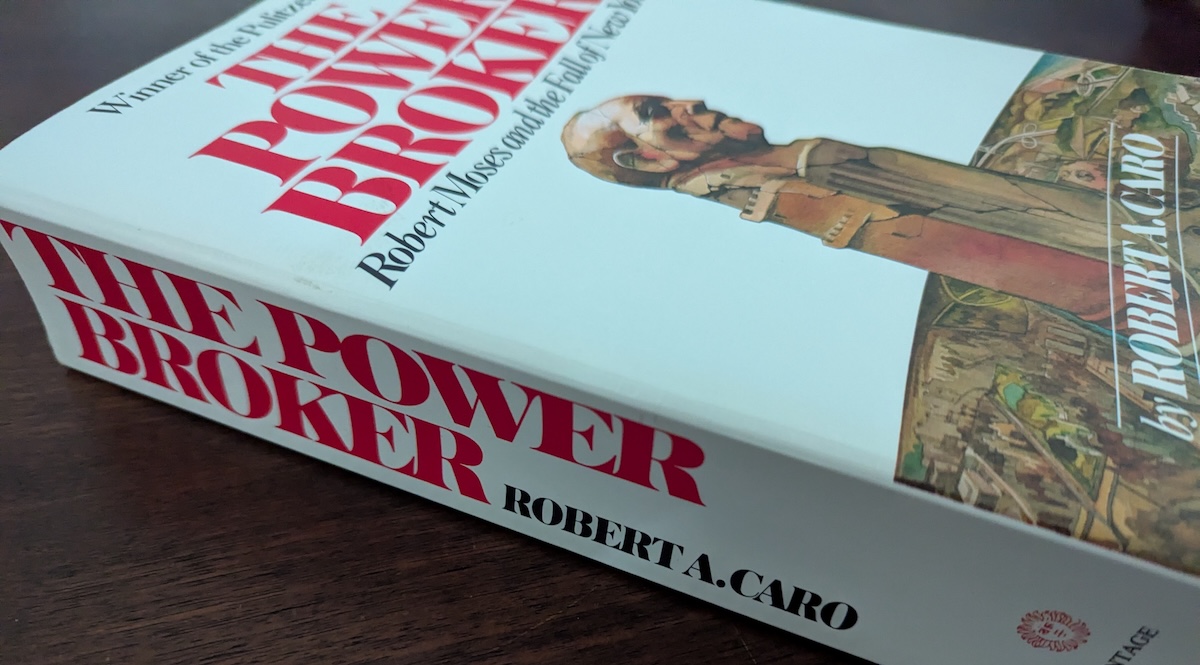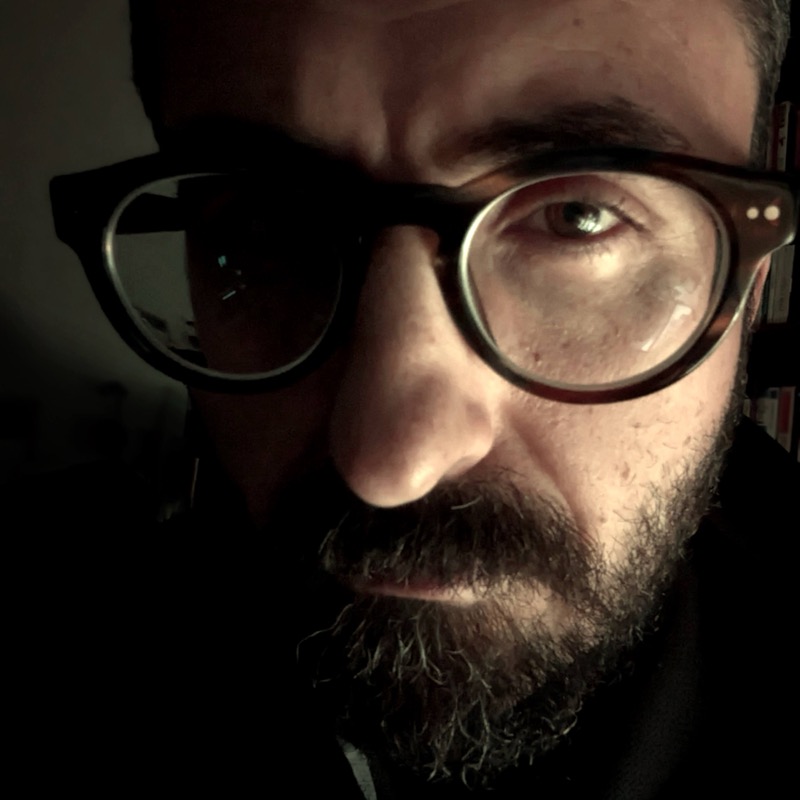The Power Broker and the Complicated Work of Sympathy

One of the best things I did last year was to read Robert Caro’s classic 1974 biography The Power Broker: Robert Moses and the Fall of New York. I finally tackled all 1,162 pages of it (plus 80 more pages of notes), so it can be retired from the shelf of shame where I keep the massive books I want to read but never get around to. (Look out, Infinite Jest.)
I was inspired by the 99% Invisible podcast, which covered The Power Broker in a series of episodes that ran like a virtual book club. Now that all 12 episodes have been posted, you can follow along at your own pace, but I recommend taking your time with it, because there is so much to enjoy about the book.
Calling The Power Broker a biography doesn’t do it justice. More than a picture of one (admittedly significant) individual, it is an exploration of power, how power flows both through and around democratic institutions in America, and how power etches itself into the physical structure of our cities, highways, parks, and homes. It is also, in its way, a love letter to New York in all its multitudinous possibilities: the many faces of New York experienced by its residents as well as the many New Yorks that once existed or might have existed. It is a monumental work written with extraordinary grace.
Unlike readers in 1974, I approached the book already aware of Robert Moses’ reputation as a villain of urban planning. While I found ample evidence supporting that view, I also found something more profound: an invitation to understand a man who caused immense harm to the city he claimed to serve without excusing or minimizing that harm. Nowhere is this challenge more powerfully presented than in the book’s conclusion, where Robert Caro frames and reframes Moses, forcing readers to confront the complexity of this figure, contradictions and all.
The final chapter, simply entitled “Old,” finds Moses just after the end of his nearly 44-year-long career as a public official, a time during which he never once held elected office. By this point, readers have witnessed how Moses reshaped America’s largest city through an unprecedented campaign of public development. The New York we know today would be unrecognizable without his influence. But readers have also seen his utter contempt for many of the city’s people, including but not limited to his famous and flagrant racism. Again and again, Moses callously dismissed those he deemed unworthy simply for being in his way.
The cost New York paid to realize Moses’ vision is staggering. From the benighting of Sunset Park beneath the Gowanus Parkway to the way the Cross-Bronx Expressway chopped up East Tremont like a meat axe—Moses’ words, not Caro’s—the impact on these broken neighborhoods and displaced families is impossible to fully comprehend. The bill for all this so-called development has still not been fully paid. Today, it’s a cost paid by travelers and commuters wasting their time in traffic and by residents leading lives made shorter and sicker by pollution.
Yet in the final pages of the book, Caro achieves something remarkable. He presents us Moses at nearly 80 years old, stripped of power and fading from relevance. Thrust into retirement, Moses shrinks into a frustrated and disappointed figure. Despite receiving occasional recognition that falls short of his grandiose expectations, he finds himself increasingly criticized by the very public that once celebrated him. Somehow, Caro manages to inspire a flicker of sympathy for this vain, arrogant bully who deceived and mistreated so many for so long in so many ways.
And then, in the famous closing paragraphs of the book, Caro subtly, masterfully, fractures that sympathy.
In private, his conversation dwelt more and more on a single theme—the ingratitude of the public toward great men. And once, invited by the Church to speak at the dedication in Flushing Meadows Park of the Excedra, a huge, marble bench for reflection donated by the Roman Catholic Diocese of New York, he gave vent to his feeling in public. Turning to a high church official who was also an old friend, his voice booming out over the public address system, he said:
“Someday, let us sit on this bench and reflect on the gratitude of man.”
Down in the audience, the ministers of the empire of Moses glanced at one another and nodded in their heads. [Moses] was right as usual, they whispered. Couldn’t people see what he had done?
Why weren’t they grateful?
Caro spends the bulk of the last chapter reminding readers that, despite his posturing, Moses is merely a man, as pitiful and flawed as any. But this final anecdote is a warning that sympathy cannot excuse Moses. He is humiliated in his dotage, but unremorseful. He demands thanks, not forgiveness, for the damage he caused.
There is a powerful lesson here. It’s tempting to write off people who do harm as monsters, but at some level, this means falling into the same trap that enabled Moses’ worst acts: the failure to see others as fully human. Caro challenges readers to fully apprehend Moses—or, I’d argue, any historic wrongdoer—by maintaining moral clarity about the damage he did while resisting the urge to anathematize him as a caricature of evil.
In our current moment, when public discourse rewards superficial judgments that fit into tweet-sized declarations, The Power Broker is more valuable than ever. It demonstrates that embracing nuance does not demand surrender to moral ambivalence and shallow bothsidesism. Within this deeply researched and profoundly humane work, readers have room to stretch out and wrestle with complex questions about the public good while maintaining clear-eyed judgment about right and wrong. Even 50 years after its publication, it remains a unique and precious meditation on cities and the flawed humans who live in and shape them. I’ve thought about it every day since I finished it and will undoubtedly revisit it here in future.
